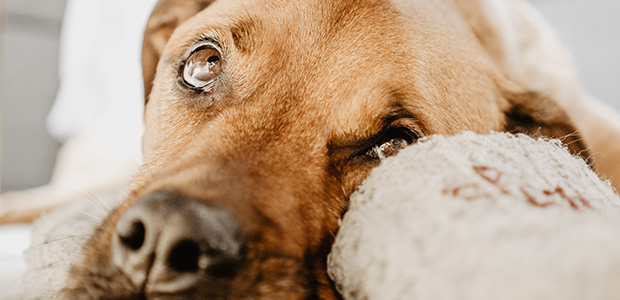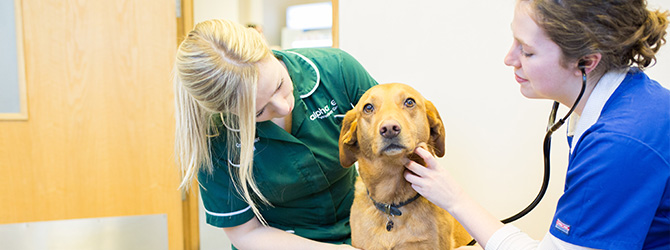Glaucoma in dogs: treatment, symptoms and more
First Published: 04/11/2019
Last Updated: 16/01/2023
Glaucoma occurs when there is too much pressure within a dog’s eye.
Usually, fluid will flow both in and out of the eye at a balanced rate, but if the eye produces too much fluid or cannot drain it successfully, the build-up of excess fluid can cause problems.
Glaucoma can damage the dog’s retina, optic nerve and often results in blindness of the affected eye. If Glaucoma is to be managed successfully, it’s important to commence treatment early. Let’s take a closer look at the two different types of Glaucoma in dogs, how to spot it and the treatments available.
Primary and Secondary Glaucoma
Primary Glaucoma fits its description well: it’s caused by genetic predisposition, and does not happen as a result of any pre-existing conditions.
Secondary Glaucoma is much more common. This is Glaucoma caused by other injuries or infections, such as Conjunctivitis (also known as pink eye). If a perfectly healthy dog were to sustain an eye injury or suffer an eye infection, their risk of Glaucoma would be a lot greater.
Read more: How to clean your dog's eyes
What causes Canine Glaucoma?
Canine Glaucoma can be caused by:
- The eye’s filtration angles failing to develop properly, which stops proper drainage
- The lens slipping out of its normal position
- The surrounding tissue becoming inflamed (perhaps due to infection)
- Tumours
- An injury that has caused blood to gather in the front of the eye
What are the symptoms of Glaucoma in dogs?
Dogs can lose their vision within hours of contracting Glaucoma, so if you notice any of these symptoms, be sure to treat it as an emergency and contact your vet immediately:
- Rubbing their eye against surfaces/with their paw
- Redness of the eye
- Fluttering eyelids, squinting or weak blink response
- Avoiding light
- Pupils different sizes, or unresponsive to light
- One eye cloudier than the other
- Reduced vision
- Loss of appetite or general lethargy

Read more: Conjunctivitis in dogs
Glaucoma in dogs: treatment
Treatments for Canine Glaucoma will depend on the seriousness of the condition, and what your vet takes to be the cause.
In the case of Primary Glaucoma, treatment will aim to get the eye pressure back to normal and to ease the dog’s pain. With Secondary Glaucoma, the vet will also treat the infection or injury that has caused the condition.
Treatments usually take the form of eye drops, tablets or in extreme cases, surgery.
Glaucoma is incredibly serious. Most affected dogs will lose their sight in one or both eyes if treatment is not sought early on.
Preventing Glaucoma
You may not be able to prevent Glaucoma occurring in every instance, but you should always seek the right treatment when your dog is suffering from any eye condition, to ensure that Glaucoma does not come about as a result of them.
Read more: Cataracts in dogs
Need more info?
For more info on Glaucoma in dogs, have a chat with your local vet.
Find your nearest vet using our Find a Vet page, or speak to a vet online using Online Vets.


